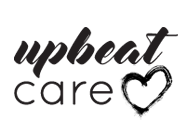Bass Brushing Technique Explained1 March 2020
We are told from a young age to brush our teeth twice a day. Plaque, the soft sticky film of bacteria, that builds along our gum line needs to be removed regularly to avoid oral health problems such as gingivitis and gum disease. Research also shows that the bacteria found in plaque can escape into the bloodstream and cause numerous other health problems including heart attacks and dementia. It is essential to get your toothbrushing technique correct to maintain good oral health. The most commonly used brushing technique is the horizontal scrub method where the bristles are activated in a gentle, horizontal scrubbing motion. However, people often completely miss the gum line and just brush the surfaces of the teeth. Sometimes brushing is done so vigorously that the gums are damaged and recede. A number of other brushing techniques exist and the most commonly recommended by the dental industry is the Modified Bass Technique, developed by Dr Charles Bass, the Father of Preventative Dentistry. Bass researched the best means of using toothbrushes and dental floss for prevention of disease in the 1940's to clean below the gumline where the horizontal scrub method doesn’t reach. THE BASS TECHNIQUE 1. Hold tooth brush to the side of your teeth with some bristles touching your gums and tilt it at a 45 degree angle so the brush points to the gum line. 2. The brush is wiggled backwards and forwards using small movements. The tips of the bristles should stay in place, the head of the brush should wiggle back and forth. Alternatively tiny circles can be made with the brush. The bristles should slide gently under the gum. It doesn’t feel like the teeth are being brushed but it is very effective. 3. Apply 20 strokes or circles at each position and repeat on every tooth, inside and out. 4. The bass technique is modified to include a sweep of the crown of the tooth. Charles Bass used scientific study to improve our dental care regimes. Almost 100 years later BioMin represents another scientific leap forward, but even with the recent advances, good brushing technique is still essential.
|






